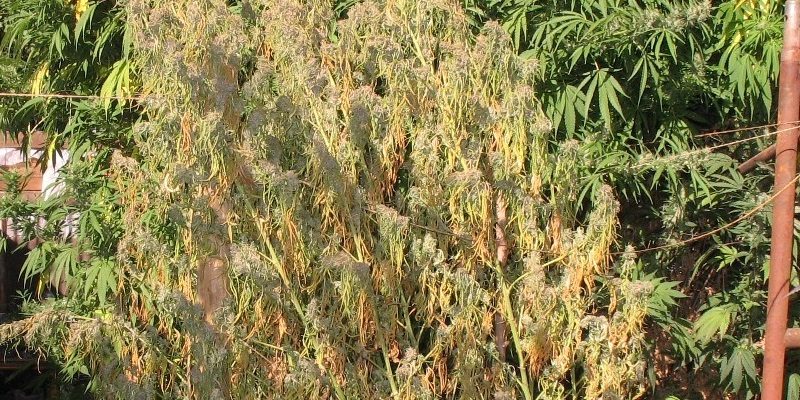In this series of articles, Growers Network talks about a few of the most common Cannabis diseases you need to watch out for. Today’s topic: Verticillium Wilt.

Plant diseases can be a nightmare in any grow operation and Cannabis has no shortage of diseases that would love to ruin your crop. So for today’s profile we’re going to discuss Verticillium Wilt, yet another fungal disease you may find yourself dealing with in your grow.
Quick Look
- Common Name: Verticillium Wilt
- Scientific Name: Six species within the Verticillium genus:
- V. dahliae
- V. albo-atrum
- V. longisporum
- V. nubilum
- V. theobromae
- V. tricorpus
- V. dahliae
- Symptoms: Shriveled, yellow-brown leaves (begins at lower leaves), brown stem
- Caused by: Fungus
- Timing: Spring-Fall
Verticillium Wilt

What is Verticillium Wilt?
Verticillium Wilt is a condition caused by several fungi species of the Verticillium genus. Starting in the soil, the fungus infects the plant through the roots and moving upward through the water conducting tissues. The result is a wilting of the plant due to water stress.
What to look for
Symptoms of Verticillium Wilt to watch for include yellow and shriveling of leaves. You may also see a sudden wilting of the plant, particularly in hot weather. The plant may recover when cooler and wetter conditions prevail.
How to Treat/Prevent Verticillium Wilt
There are no chemical treatments available for Verticillium Wilt infected Cannabis, so prevention and mitigation are key. Here are some preventative tips:
- Wash tools and boots to prevent spreading the disease via contaminated soil.
- Control weeds as some species can host the fungus with no symptoms.
- Remove infected plants and destroy them.
- Heavy watering and fertilizers may stimulate new tissue growth, but this does not prevent potential reinfection.
Writer's note: In some cases it’s recommended that the infected soil be grassed over for a minimum of fifteen years (!) before replanting.
So now you know a bit about Verticillium Wilt and what you can do to prevent it from ruining your grow. Have additional questions about Verticillium Wilt? You should join our forum where you can post pics and ask our expert community about this topic or any other!
Happy Growing!
10 Best Gift Ideas for Cannabis Connoisseurs and Growing Aficionados (2022)
December 7, 2022Developing and Optimizing a Cannabis Cultivation System
December 14, 2021Dealing with Insomnia: How Can CBD Help?
December 10, 2020Your Guide to Sleep and CBD
December 7, 2020
Do you want to receive the next Grower's Spotlight as soon as it's available? Sign up below!

Do you have any questions or comments?

About the Author
Chris DeWildt is a graduate of Grand Valley State University and Western Kentucky University. He worked in education and publishing for ten years before joining the team at Growers Network.